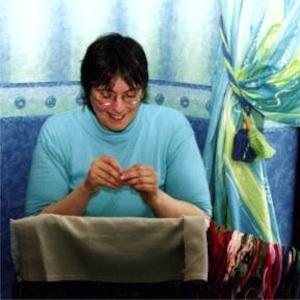- Home
- How to Needlepoint
How to needlepoint - Velvet stitch
Joyce, like many of my readers, is learning how to needlepoint. She reached out to me for advice on a specific design she was stitching.
Specifically, she wanted to know how to needlepoint a furry texture for the cat in her project. I suggested the velvet stitch technique, which I will explain in this guide. This stitch is also ideal for creating the appearance of fur or fluff, such as bunny tails or the bodies of butterflies or bees.
You can use this versatile stitch on other fabrics, however, canvas has the benefit of ensuring you space your stitches evenly. This means you won't have areas of dense plush alongside patches where it appears your stitching has mange! Not the best effect if you are trying to portray a furry creature. It may give the intended result if you are stitching something more random, such as a tree or bush.
In learning how to needlepoint, using techniques like the velvet stitch can add contrast to a design which has less texture elsewhere.
What is the best fibre to use for velvet stitch?
To emphasize the fluffy nature of trimmed Velvet stitch, I like to use wool, such as Appleton's crewel wool. You want to choose something with body to it, so the stitches stand upright when grouped together, rather than flopping over and laying on the surface fabric.
I find tapestry wool will work at a pinch if you separate the strands after you cut them. However, it is thicker and harder to pull through the canvas.
An 18 count needlepoint canvas is ideal for learning how to needlepoint with the velvet stitch technique. The threads are close enough together to give a dense 'fur' effect, while still allowing the wool to be pulled gently through the canvas.
I suggest a size 18 tapestry needle for 2 to 3 strands of crewel wool.
Blend your threads for a natural appearance
An additional benefit of using crewel wool is that you can thread multiple colours through the needle at one time to give a more natural-looking effect. Swap out one colour at a time, to give a shaded effect across an area.
How to needlepoint: Working velvet stitch on canvas
Begin with the bottom row of your velvet stitch section and work towards the top.
Start by working a half cross stitch from A to B. Then bring the needle back up in the first hole again. Holding the yarn under your thumb take the needle back through the canvas at B, but don't pull the yarn right through.
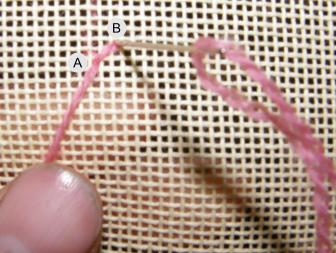
Leave a loop on the surface and bring the needle back up at C. Do not put your needle through the loop!
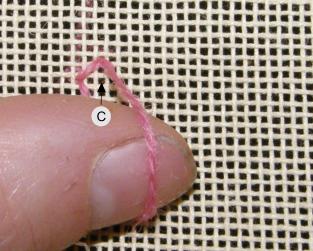
Take the needle back down at D, holding the loop under your thumb to keep it in place, to complete the velvet stitch.
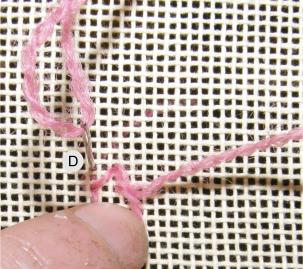
With the first stitch completed, bring the needle back up in hole C to begin the next one. Repeat the first stitch along the rest of the row.
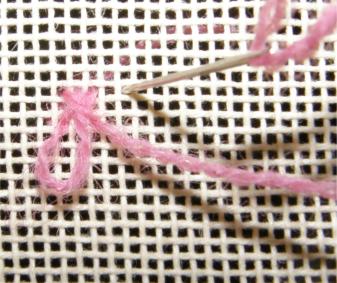
Work following rows above the first. I like to take the yarn through the back of the stitches and begin the next row at the left again. Remember to work up towards the top of your velvet stitched area.
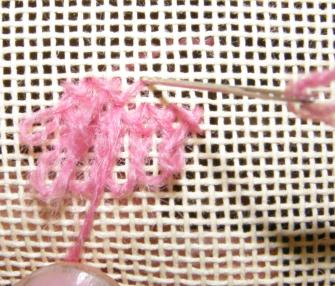
I worked the sample in the previous photos with one strand of Appleton's crewel wool for clarity, however, if you are stitching fur it can give a more realistic effect if you combine different coloured yarns in the needle. This also gives the needlepoint stitches more body.
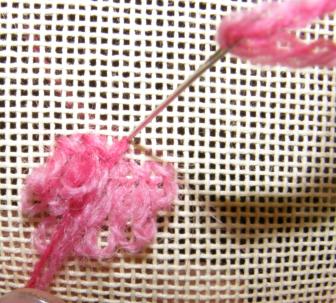
Here is my completed mini section of velvet stitch before trimming.
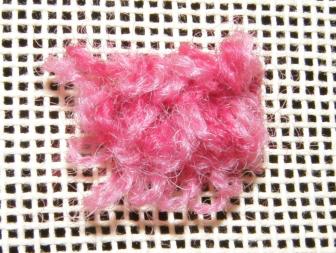
The last step is to snip the loops to create a fuzzy pile. If some loops were slightly longer than the others, you can give your fur a "hair cut" and trim it so that everything is even.
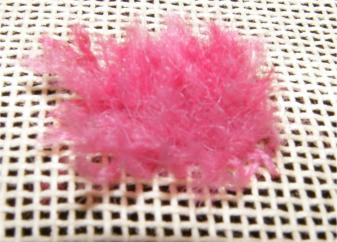
Velvet stitch on fabric
I had a scrap of Hardanger fabric (22 count) left over so I used it to stitch a sample to show that it can work on any fabric.
I used 2 strands of DMC Medici wool in tones of grey.
The first two rows used 2 strands of dark grey. The next two had 1 dark strand and 1 lighter one. Then in the last two rows I used 2 strands of light only.
I photographed this sample after cutting the loops but before trimming the work so you see the effect. This might make a nice horse's mane or tail.
I hope this how to needlepoint guide to velvet stitch has been helpful.
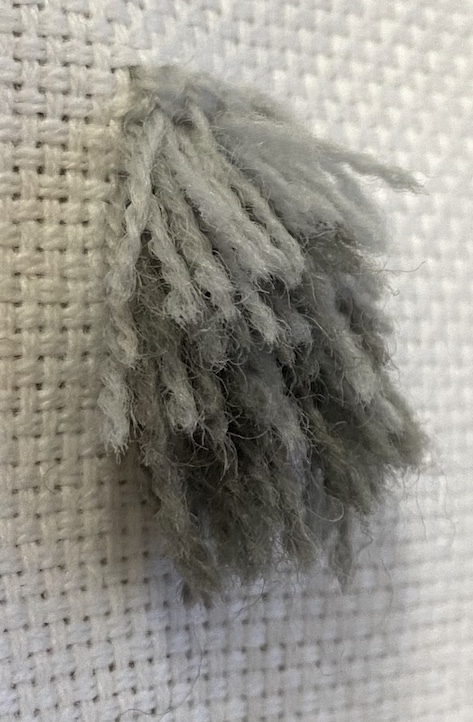
Stay connected between projects
If you’d like occasional updates from my embroidery room, including new patterns, gentle tips, and little things I think you might enjoy, you’re warmly invited to join the Stitchin’ Times newsletter.
No pressure. Just a friendly note now and then to keep you inspired.




